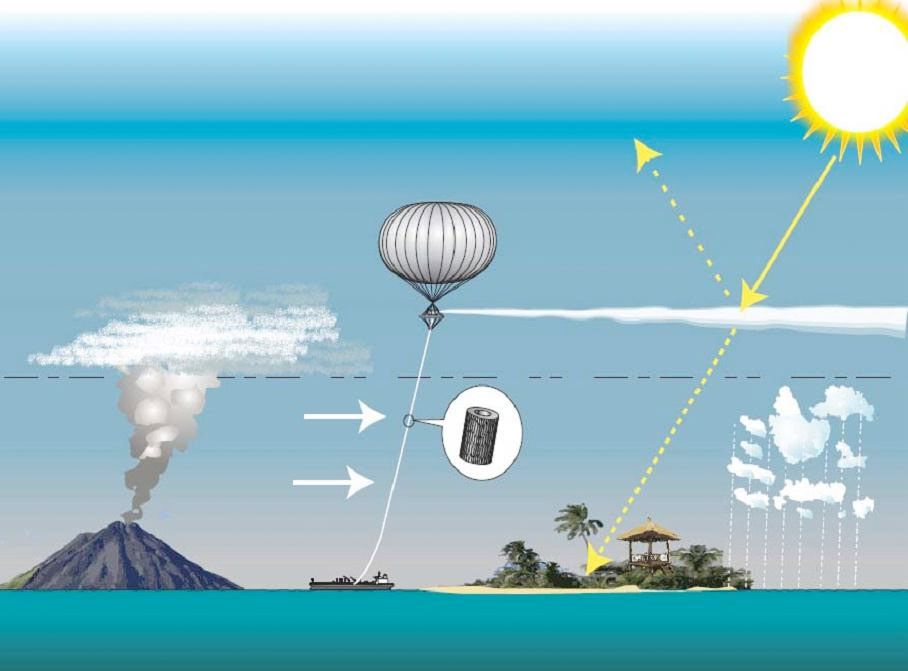One controversial idea gaining traction among scientists is injecting small particles, known as aerosols, into the stratosphere to block the sun’s radiation. Aerosols reflect solar radiation back into space, lowering Earth surface temperatures. They can also provide “seeds” around which water droplets coalesce to form clouds, thus further increasing the planet’s reflectivity. The particles are fairly long-lived in the stratosphere, a stable region of the atmosphere that begins five to six miles up. This makes the idea of aerosols’ use as a worldwide planet-cooler fairly attractive.
The effects of aerosol injections are at least somewhat known, since volcanic eruptions produce aerosols naturally and have produced cooling in the past. Mount Pinatubo, a volcano in the Philippines that erupted in 1991, spewed so much sulfur dioxide into the stratosphere that the planet cooled by 1 degree Fahrenheit (0.55 degrees Celsius) and stayed cool for more than two years.

Stratospheric Aerosol Injection (SAI) is a theoretical solar geoengineering proposal to spray large quantities of tiny reflective particles into the stratosphere, an upper layer of the Earth’s atmosphere, in order to cool the planet by reflecting sunlight back into space. Proposals range from spraying reflective particles, such as sulphur dioxides, finely powdered salt or calcium carbonate, from aircraft, shooting particles from artillery guns, or using large hoses to reach the sky. None of those solar geoengineering approaches address the underlying causes of climate change. In stead they aim to control the amount of incoming solar radiation by emulating the sulphur-rich dust cloud that remains in the atmosphere after large volcanic eruptions.
In contrast to a volcanic outburst, SAI assumes continuous maintenance of the particle layers by regular injections. SAI using sulphur dioxide is the most-studied option. Computer simulations suggest that this technique would likely cause droughts in Africa and Asia and estimate that the SAI could endanger the source of food and water for two billion people. Because of the unequal global impacts and its potential to be weaponized, solar geoengineering carries insurmountable challenges for governance. Therefore, several hundred civil society organizations from around the world are calling for a multilateral ban on solar geoengineering.
Geoengineering is a cutting-edge, „Break Glass in Case of Emergency“ kind of tool. The basic idea is to make temporary changes in the earth’s oceans or atmosphere that lower the planet’s temperature. These changes wouldn’t be intended to absolve us of the responsibility to reduce emissions, they’d just buy us time to get our act together. (Bill Gates, How to Avoid a Climate Disaster)


